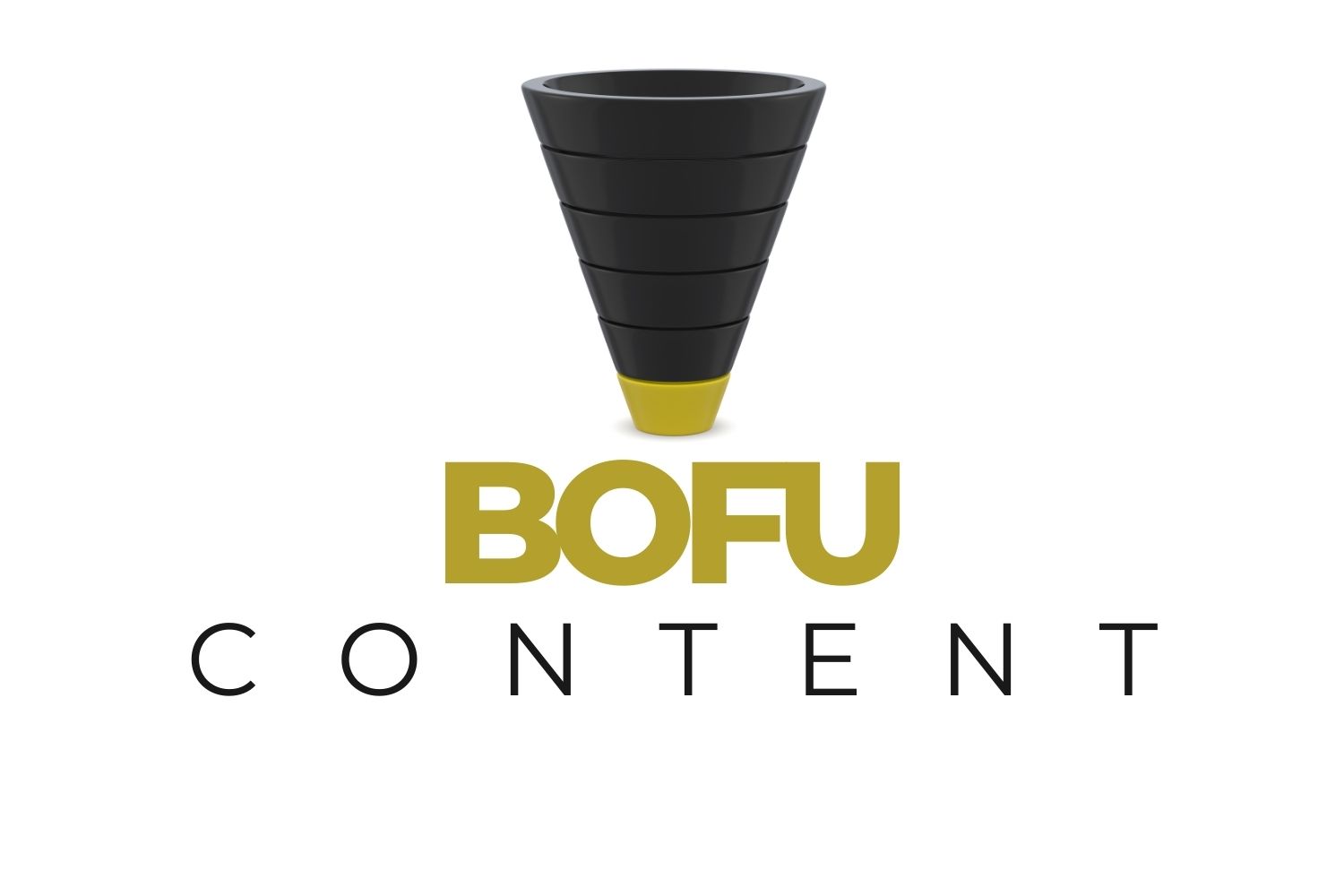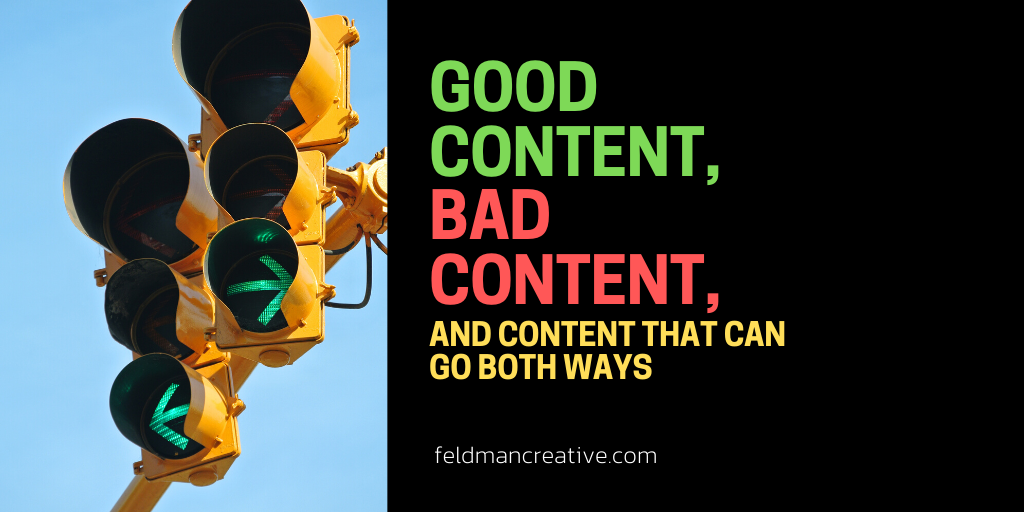I get this question a lot. In my blogging bible it says, “Thou shall answer your customers’ questions in your blog posts.” I’m going to give it a try with the hope that some of the way I do things might help you produce more content, if that’s one of your goals.
But let’s be clear about the “more” thing. More content only furthers your cause if it’s great content. Don’t take this for granted. Great is great. More is simply more.
The consultants who spew ideas about hitting certain marks and producing in volume are mostly full of it. They’re the same people droning on in their blogs with the same old tips and points of view as their peers.
I created this rule and play by it…
Don’t count characters. Make your characters count
Preamble complete. Here’s how I manage to produce a steady stream of blog posts, guest posts, offers, slide decks, infographics, images, interviews, podcasts, webinars, videos, eBooks, and well, you know, content.
Where do I get ideas for the content?
Listening.
Yep, listening. My prospects, clients, partners, and even friends in the business, ask me questions. Every day. All day. I write them down. As simple as this sounds, it takes some practice to get the hang of. What that really means is you need to remind yourself to do this.
This article is a response to listening to my customer’s questions.
You’ve probably heard the term “listening” in the context of social media. It really means pay attention to what you read, especially the questions.
Listening is very easy to do proactively via social media. I mean, look for questions. They’re everywhere. Oddly enough, you’ll find they’re the main gig at question sites like Quora, Yahoo Answers, American Express OpenForum, and LinkedIn Groups.
Tuning in.
Provided you know what topics interest your audience, tuning into them is very easy. Set up Google Alerts. It can’t get any easier than that.
Setup one of the many self-curation services, like ScoopIt or Paper.li—even if you don’t plan to publish it. Relevant news will be collected for you. These are idea gold mines.
Find yourself some good blogs and sites where the curation is done for you. Alltop covers every conceivable subject and tries hard to collect the best. The bookmarking sites do too.
A good many online publishers put out “best of the web” posts and emails, usually weekly (and unfortunately, daily as well).
There’s also this emerging form of curation where readers nominate and endorse content. I’m not going to plug one here. It’s too soon to tell which of them matter most, but they certainly help collect content, by topic, for you.
Diving in.
I suppose this practice is not far removed from listening or tuning in, but I wanted to call out the idea of “diving in” when you discover a deep resource worthy of the plunge. SlideShare is one such resource. Ideas on steroids. Often organized and presented with wit and elegance.
There are other content repositories worthy of frequent deep dives, but none better than SlideShare.
Reading.
No brainer here. I read. I suppose it does require brains. I read like mad… business books, magazines (favorite: Fast Company), eBooks, industry reports, blogs, forums. Any writer who tells you they don’t get ideas from reading probably shouldn’t call him or herself a writer. Imagine a musician who doesn’t listen to music.
Following influencers.
Here I go again with the overlap. This tip draws from all of the above, but it’s a good one no less. Identify 1 to 100 influential leaders in your niche. It’s a must. Even influential dudes like Bono do it.
If they write (most do), read their stuff. If they speak, listen. If they dance, watch. I can go on and on about the why and how of gathering ideas from influencers, but instead I’ll just tell you they’re influential for a reason. They have ideas. And ideas give rise to more ideas.
Swiping.
The easiest way to get ideas is to steal them. I’m not too proud to say I do it every day. And I’m eager to encourage you to do it. But let me explain a useful, ethical, and interesting form of idea stealing.
Writers actually call it swiping. You read something you like and stash it somewhere safe. Not surprisingly, this safe haven has come to be known as the “swipe file.” Mine must have 2,000 articles in it.
Here’s the thing though… It’s only the idea you actually swipe. For instance: you love this piece. You think, “There’s a story in me about sharing my content creation process.” Glad to be of service. Go for it my friend. You can even publish my words. Of course, you’ll credit me with a link. All good.
Now of course, in the spirit of good clean swiping, what you really aim to do is create something completely fresh. That’s how I do it. And when I construct a story from an idea I’ve discovered elsewhere, I usually do a search for more of the same. I collect the gems, roll it all into one, give credit where credit is due, but largely wind up riffing with copy that’s 99% mine.
This is the basis of all art. Imagine if you set out to write a love story novel and you were told you don’t go there. It’s already been done. Or maybe you want to do a crime drama TV show. You think that’s original? Original and fresh aren’t the same things.
Thinking.
I think I get ideas because I think all the time. I think you do too. Don’t have time to think? Make time or get out of the marketing game.
Sometimes I think, “good idea.” Sometimes I think “good idea, but…” Sometimes I think, “bad idea.” Almost everything I write is one of these three flavors.
Don’t be afraid to delve into all three: (1) endorsing a good idea (2) twisting, bending and expanding on a good idea, and (3) disagreeing with an idea. I can’t tell you how many times I disagree with what I read/hear/watch. Okay, I can tell you, but then you’d call me “negative.” I get enough of that.
What do I do with content ideas?
Write them down.
Ideas tend to get lost. Don’t let it happen. Depending on where I am, I write the ideas down quickly.
Notebooks—I have many and I like to think they’re organized by idea type (blogs, forthcoming book, business development, etc.) They tend to get unorganized, but they’re captured. I have one moleskin-like notebook I reserve for the ideas I truly love, but take extra development effort.
Smartphone—I got the Samsung Galaxy Note II because I was tired of scrambling for paper when I’m at the gym, in my car, etc. It has a stylus. The late great Steve Jobs didn’t approve of the stylus. I do. I write heaps of ideas into a little notepad app.
Web services—In kind of a part-swipe/part-idea fashion I write/save ideas on Dropbox, Evernote and my new favorite, Springpad (this article idea went to Springpad, which is a tasty app and web service).
WordPress—When time allows, I begin a very loose draft in WordPress, sometimes just a working headline, which will remind me what I want to write about.
Record them.
I often speak my ideas into my phone or a digital recorder I keep in my car. I suspect the auto insurance agents endorse the digital recorder more so than the phone.
What do I write or record?
Usually I document the basic idea. Sometimes a working headline. Occasionally, a killer headline. Often, I’ll record where I got the idea. Additionally, I often do a little barfing. By that I mean, I continue writing without slowing down to worry about how good it is. The idea is to not lose the idea.
Write.
Sooner or later, I start writing. I mean that literally: sometimes sooner, sometimes later. More often than not, I don’t finish. I find I exhaust my brain with the front end of the piece and want to return fresh to wrap it up.
Incubate.
I always subject my work to an incubation period. Length undetermined. I might be excited and confident enough to review and publish a piece later the same day or the following day. More often, I let the idea stew for several days.
I do this for two reasons. One, I’m able to improve the piece with fresh eyes. Two, I often return to conclude the idea wasn’t so hot after all, so I kill it. It’s a painful process, but it must be done.
Edit.
Content creators must edit. Once. Twice. Three times. Whatever works for you. Don’t confuse this with the notion your work must be perfect. It never is. However, editing is a necessary step.
What else contributes to my content creation process?
The editorial bucket.
The what? Yes, usually the phrase “editorial calendar” is used. I seldom use them.
Calendars are a good idea that comes from the publishing business. However, major publishers have lots of contributors, carefully constructed processes, and advertising space to sell. Calendars are key.
In small shops, they really aren’t necessary. I prefer the “bucket” or “buckets” approach, meaning you create collections of ideas, by topic, that are ready and waiting when you need them. I wrote about my swipe file above. In it, I have about 40 categories, which I consider buckets. They serve me well and make it easy for me to find the next idea quickly.
Deadlines.
Deadlines are a content marketer’s friend. Give yourself some. If you have to miss one, let yourself off the hook. No big deal. However, if you want to build an audience, you do want to create content with regularity and practical intervals and timelines are a good thing. I have a few “internal” deadlines that push me. If I know I have some activity coming up which is likely to interrupt the content publishing routine, I’ll try to plan ahead for it.
Enjoyment.
I saved my strongest secret for last. I enjoy creating content about the things my prospects and clients want to learn. I truly do. Let’s face it: you pursue your passions.
Do you feel creating content is going to be a drag or a necessary evil? There’s no shame in admitting it. The real shame would be denying it and then kidding yourself you’ll do it consistently. You won’t.
My recommendation is if you know you won’t enjoy creating content, find someone who will and hire him or her.
One last thing… Sacrifice.
No need to sound the violins for me, but I do want to mention, producing content for Feldman Creative is not my job. It’s my marketing. That is to say, I’m not paid for it like a marketing staffer might be, but of course, I am rewarded.
To create content at the pace I wanted to, starting about 2½ years ago, I knew I had to give something up. If you know me even just a little, you know it wouldn’t be making or listening to music. I basically gave up TV. I watched a lot. Now I don’t. I didn’t go cold turkey, but I went from having a long list of favorite shows that consumed hours each week to having none. Now I watch sports a bit each week and might join the family when Modern Family, Big Bang Theory or So You Think You Can Dance is on.
I felt I should toss that in. Do you have a tip or two you’d like to toss in. Please do.
I’ll close by saying content marketing works. But you have to get good at it, which simply takes hard work. So get to work.
Pssst… Want some of my strongest content creation ideas? Help yourself to my free eBook, “Strike a Chord.”








Comments
Joseph
You. Are. Super super superlative! Thank you so much.
Michael Jones
Mr. Feldman, I’ve been reading your stuff for a little over a year and it’s long overdue that I tell you what a terrific writer I think you are. I get a LOT of content every day, but I always look forward to yours and, more often than not, stop whatever I’m doing to read it right away.
Barry Feldman
Michael, despite having a cold, I was having a nice day in the office, but it changed to a great one after reading your comment. Thank you very much.
Melissa
Sacrifice? It’ll be just my luck that I’ll finally make it to Jeopardy and the final category will be Pop Culture. And for the first time in my life I’ll be completely clueless. These are things I worry about.
Thanks for the nudge!
Doug Kessler
I always wondered how The Bazza could be such a relentless content machine. And not just volume, quality too. Now I know. Great post.
Matthew "Kaboomis" Loomis
I’ve been curious what your secrets were to prolific content production and now I know. Thanks for sharing, Barry!
I’m in the process of cutting some things out that are time sucks, and like you said, it’s a gradual process, but I’m getting there.
Want to Increase Your Website Traffic 500%? | Feldman Creative
[…] How Does One Guy Produce So Much Content? […]